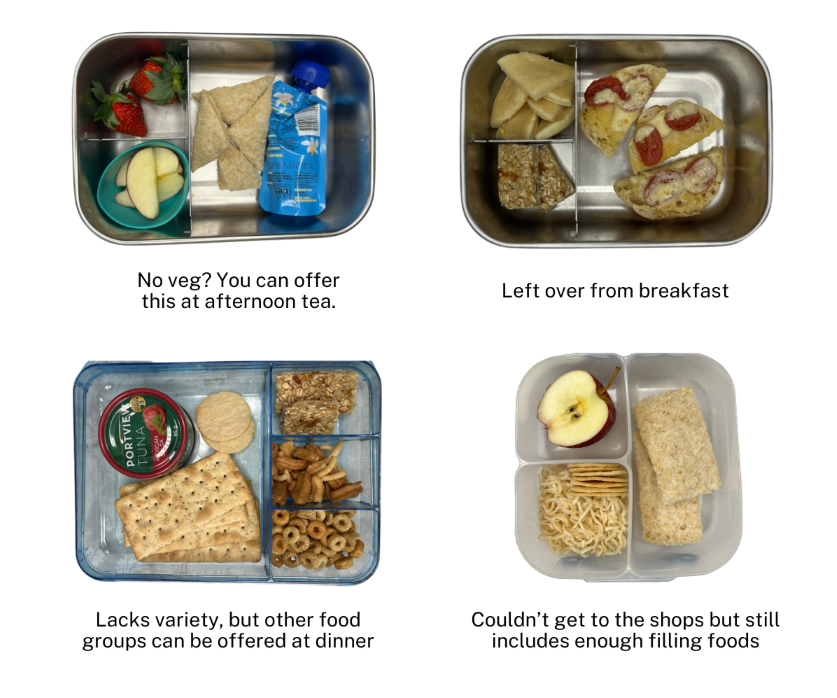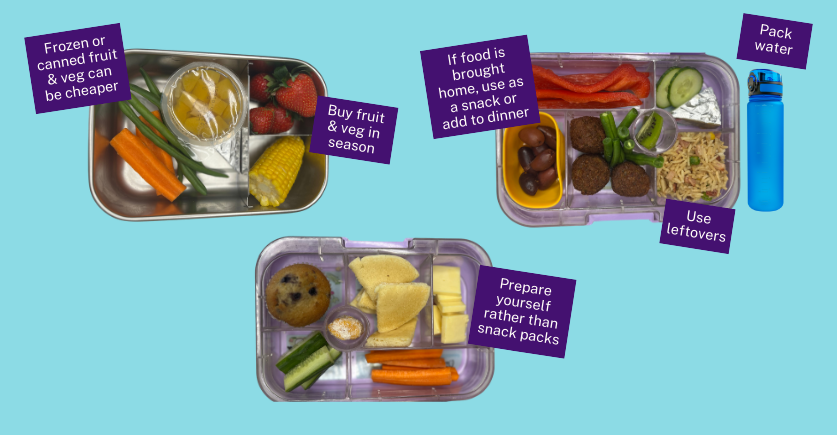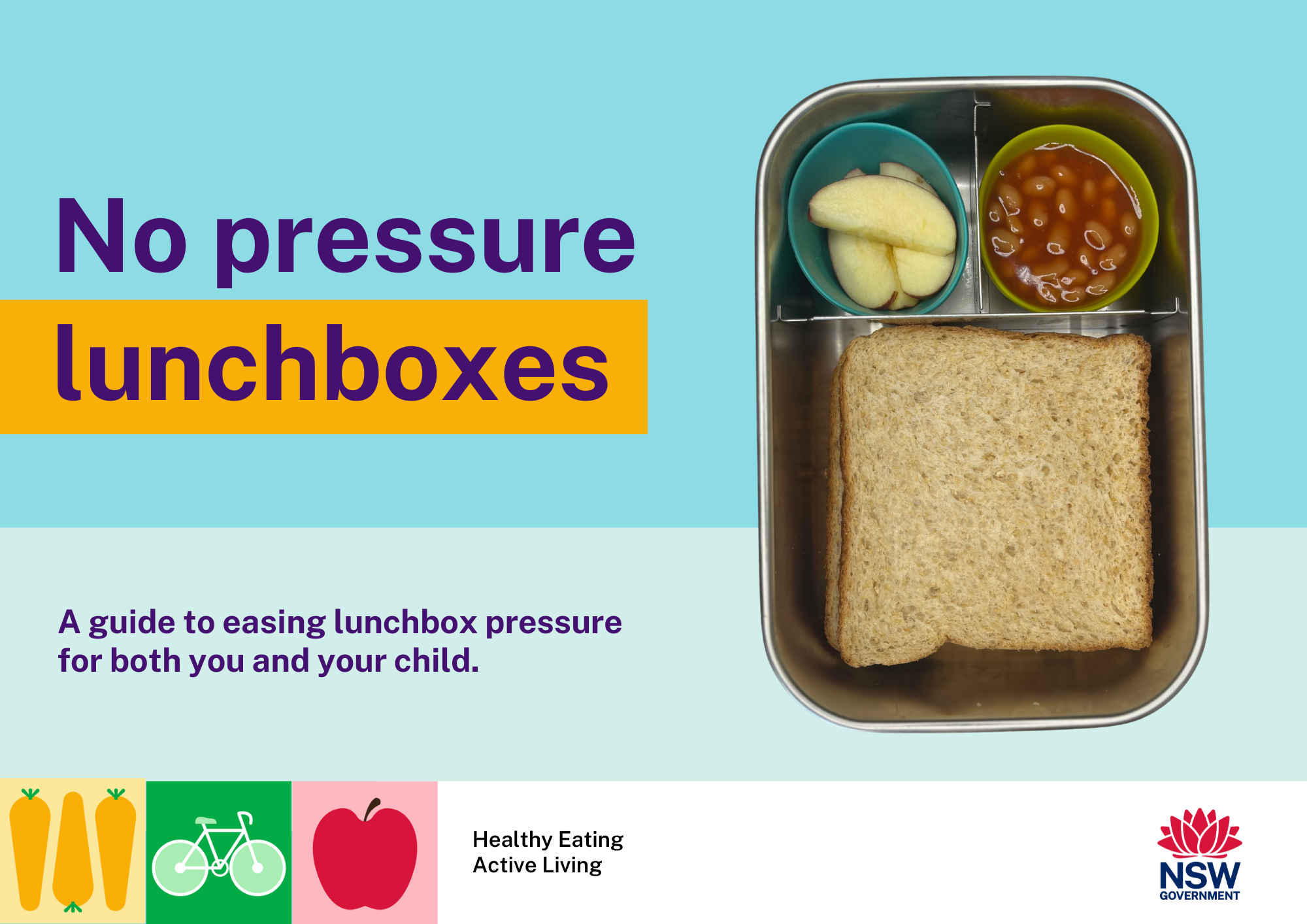Packing the right amount of food can be tricky; you won’t always get it right. Children’s hunger can change from day to day, or even during the day. Try to pack enough so your child feels full, but not so much that food often goes to waste. Too much food can overwhelm young children.
How much should I pack?
Accordion Content
A child’s hunger can vary day-to-day so it can be hard to know how much to pack. If the lunchbox comes home full, your child will make up for it by eating more at other meals.
Top tips:
- Pack enough food so your child can eat until they are satisfied.
- If their lunchbox constantly comes home full, pack a little less
- If you child often says they don’t have enough food in their lunchbox, pack more food or include more filling options.
- Include mostly foods your child knows and has eaten before.
- Provide a ‘good enough’ lunchbox – it doesn’t need to be perfect.

What should I pack?
Accordion Content
- Include mostly foods your child knows and has eaten before (accepted foods). This will help to make sure your child doesn’t go hungry.
- Try including a new food or one your child isn’t familiar with yet. Childcare or school can be a good place to include some new foods. You may have to offer a new food many times before they will eat it.
- Be aware of high allergen foods. If your child hasn’t eaten these foods before, it’s best to introduce these at home. Click here for a list of high allergen foods.
- Children don’t always need a treat in their lunchbox; save these to eat at home.
- You may need to check the service or school nutrition policy for some foods.
You choose what to pack. They choose what to eat.
Accordion Content
- Your role is to decide what is packed in your child’s lunchbox. Offer them options, e.g. "Would you like an apple or an orange?" This will help them feel in control.
- The final decision of what to pack is up to you.
- Include mostly foods your child knows and has eaten before.
- Your child gets to choose what to eat from what you have packed - this helps children build a healthy relationship with food and eat to their appetite.
Don’t stress about how much your child eats, this is up to them.
Some children:
- Have big appetites, some have small.
- Have a good variety of foods in their diet.
- Eat less variety and take longer to accept new foods.
- Eat a small breakfast and lots at school.
- Prefer to eat lots for breakfast and dinner and less at school.
- Run around or play more at lunch and eat when they get home.
Do I need to include all 5 food groups?
Accordion Content
- The 5 food groups include meat/protein, cereals, dairy, veggies and fruit.
- The lunchbox is a good opportunity to provide a variety of foods; but you don’t have to include all 5 food groups every day.
- You can offer more variety at home at breakfast, dinner and on weekends.
- The Australian Guide to Healthy Eating has more detail on the 5 food groups, you can use this as a guide to help you decide what to pack.
Other things to consider
Accordion Content
- How many opportunities are there to eat? Morning tea, lunch... afternoon tea?
- Is there a fridge? Or do they need an ice brick?
- Can your child open their food? Have they got someone to help them?
- Your child can help you plan. Let them choose from options you decide.
You can ask your child:
- When are you most hungry?
- Would you like and apple or an orange in your lunchbox?
- Did you have enough food today?
Money saving tips
Accordion Content
- Frozen or canned fruit and veg can be cheaper
- Buy fruit and veg in season
- Use leftovers
- If food is brought home, use as a snack or add to dinner (if the lunchbox is refrigerated during the day)
- Pack water as a drink
- Prepare snacks yourself rather than buying pre-packaged snacks

Are you having big challenges with feeding your child?
- If your child eats a very limited diet, their accepted foods may not fit within your preschool’s or school’s nutrition policy. Speak with educators or teachers about working together to support your child's feeding.
- If you want to learn ways to help your child become a healthy eater, you can register for our Growing Healthy Eaters session run by Child and Family Health nurses and health professionals.
- Your GP or Child and Family Health nurse can help with additional support to assist their learning to eat.

